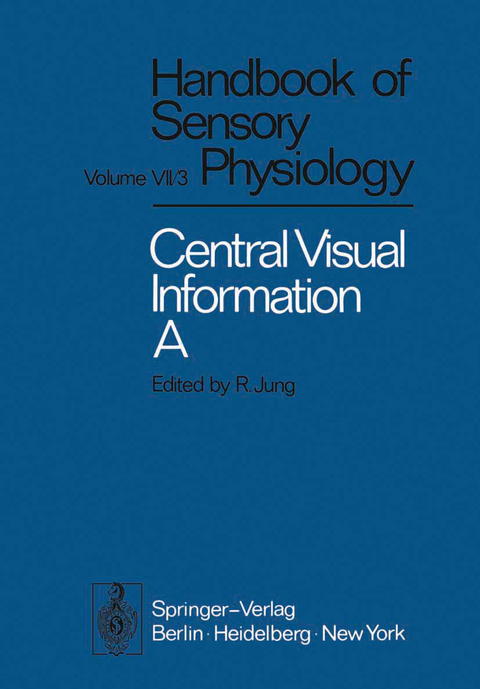
Central Processing of Visual Information A: Integrative Functions and Comparative Data
Springer Berlin (Verlag)
978-3-642-65354-4 (ISBN)
Integrative Functions.- 1 Visual Perception and Neurophysiology. With 16 Figures.- 2 Neurophysiological Mechanisms in the Visual Discrimination of Form. With 9 Figures.- 3 Central Mechanisms of Color Vision. With 17 Figures.- 4 Neurophysiology of Binocular Single Vision and Stereopsis. With 16 Figures.- 5 Visual Stability and Voluntary Eye Movements. With 4 Figures.- 6 Neuronal Mechanisms of Visual Movement Perception and Some Psychophysical and Behavioral Correlations. With 37 Figures.- 7 Temporal Transfer Properties of the Afferent Visual System. Psychophysical, Neurophysiological and Theoretical Investigations. With 53 Figures.- 8 Maintained Discharge in the Visual System and its Role for Information Processing. With 8 Figures.- 9 Neuronal Changes in the Visual System Following Visual Deprivation. With 4 Figures.- Comparative Data.- 10 Principles of the Mosaic Organisation in the Visual System's Neuropil of Musca domestica L. With 19 Figures.- 11 Comparative Physiology of Colour Vision in Animals. With 18 Figures.- 12 The Evolution of Mammalian Visual Mechanisms. With 7 Figures.- Author Index.
| Erscheint lt. Verlag | 17.11.2011 |
|---|---|
| Reihe/Serie | Autrum,H.(Eds):Hdbk Sens.Physiology Vol 7 | Handbook of Sensory Physiology |
| Zusatzinfo | XIV, 800 p. |
| Verlagsort | Berlin |
| Sprache | englisch |
| Maße | 170 x 244 mm |
| Gewicht | 1378 g |
| Themenwelt | Medizin / Pharmazie ► Allgemeines / Lexika |
| Medizin / Pharmazie ► Medizinische Fachgebiete ► Neurologie | |
| Studium ► 1. Studienabschnitt (Vorklinik) ► Physiologie | |
| Naturwissenschaften ► Biologie | |
| Schlagworte | brain • Chemistry • Neurophysiology • perception • Physics • Physiology • retina • Sehen |
| ISBN-10 | 3-642-65354-5 / 3642653545 |
| ISBN-13 | 978-3-642-65354-4 / 9783642653544 |
| Zustand | Neuware |
| Haben Sie eine Frage zum Produkt? |
aus dem Bereich


